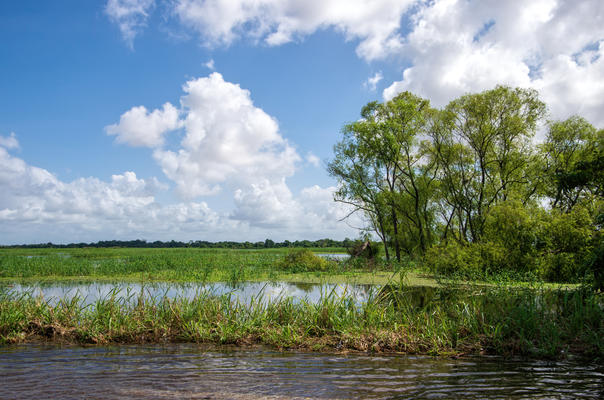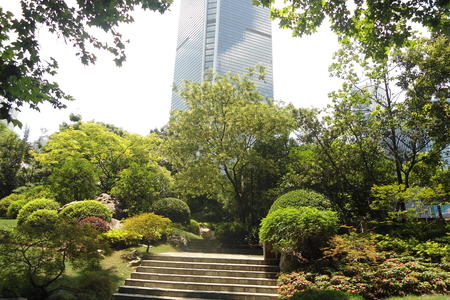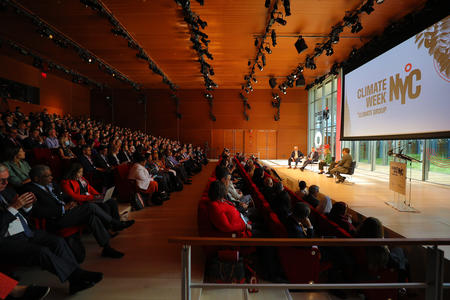With just three weeks to go until Climate Week NYC kicks off, we’re looking at the topic of nature – one of the week’s key themes. Seeing changes in nature can help us understand the impact climate change is having on our planet, and devise new ways to fight it.
Climate change is getting worse. What's nature got to do with it?
Once again this has been a year of climate records, with temperatures soaring in some places while others are washed away in violent floodwaters. These devastating natural occurrences are becoming more extreme and more common, affecting humans, animals and ecosystems alike.
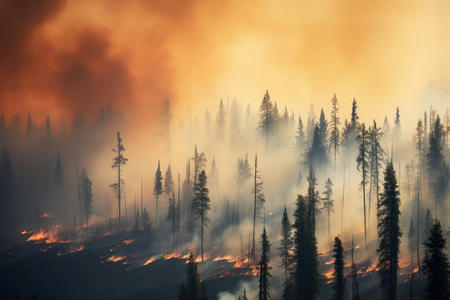
Often the most accessible way for people to understand the climate crisis is to look at these impacts on the natural world around them. Charts and statistics are one thing, but it’s much more difficult to doubt your own eyes, particularly when faced with the animal victims of forest fires in places like Greece, Australia and Canada.
At the start of summer in the UK this year, social media was alive with reports from experts and amateurs that there were fewer insects around than ever before. Usually, June gardens would be full of bees, butterflies and ladybirds but suddenly they didn’t seem to be there. Like the canary in the coal mine, this is a sure sign that something isn’t right. If insect numbers are reducing it means they haven’t got the right habitat or conditions to thrive. This might mean green space has reduced, temperatures have changed or pesticides have been overused. Whatever the reason – and it’s almost always a mix of reasons – there will be a link with climate change, with an impact in rural and urban areas.
Many solutions to connected crises
If we want to halt the climate crisis, we need all hands on deck and we need a range of solutions. This includes addressing the biodiversity crisis, which has seen the base rate of global extinctions far exceed the natural rate for many years.
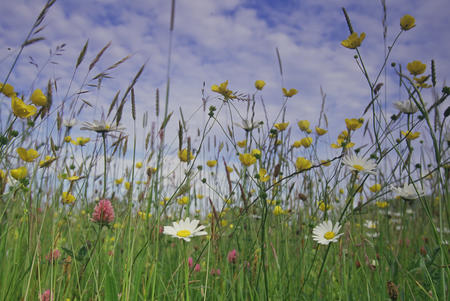
We are losing species before we even understand how they could help us address the challenges we face. Indigenous peoples have long understood how to use different trees and plants for healing purposes. Modern medicine relies on a lot of these early learnings, and every species that disappears from Earth potentially removes a cure for human illnesses.
Nature has a key role to play in reducing carbon emissions through carbon sinks such as forests and oceans, but it can also help to adapt to the impact of climate change. Anyone walking down a shady street on a hot day will appreciate the cooling impact of urban trees. And in many tropical and subtropical regions, mangrove forests protect local people from the worst effects of powerful sea storms. Without this resilient natural barrier, communities can be devastated.
Matching solutions to our shared concerns
Increasingly this dual crisis of climate change and biodiversity loss is being recognised and acted on, both by non-governmental bodies and governments. In 2022, 95% of state and regional governments reporting to CDP stated that deforestation is a major issue for them. A sobering statistic in a world where we are categorially failing to protect our remaining forests.
But knowing that deforestation is a problem is helping governments to direct their actions, particularly among state and regional members of the Under2 Coalition. Cross River State in Nigeria, for example, has been intensively replanting its forest reserves, which is improving food and water security for local people. Campeche in Mexico also has a State Reforestation Programme to create and maintain tree cover for the benefit of schools, institutions and individuals.
Coming together for progress
At the end of 2022, COP15 – the ‘biodiversity COP’ – took place in Montreal, focusing on the natural world and efforts to stop nature loss. Last year, representatives of 188 governments agreed the Kunming-Montreal Global Biodiversity Framework to address biodiversity loss, restore ecosystems and restore indigenous rights. This positive step is further than the international community has ever gone and gives hope for greater global ambition.
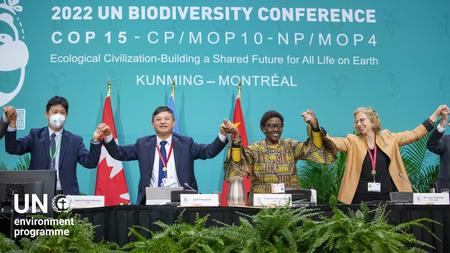
Another key date in the calendar for nature is Climate Week NYC, taking place in three weeks time. Alongside our events, community groups can host meetings on issues that matter to them. Time and again we find that one of these issues is nature. From agricultural sustainability to urban gardening, forest protections and ocean acidification, it’s clear that people see the connection between nature and climate - and want to address it.
So this year nature will once again be one of Climate Week NYC’s main themes. We’ll be looking at how this enormous subject links in with agriculture and health – and how we can make a difference by working together. One of the biggest achievements of this week is its ability to bring together governments, businesses and individuals to find common solutions to some of the most pressing issues of our time.
Reducing emissions on its own will not be enough to save the natural world and ensure a sustainable future for the coming generations. But, taken with actions from across society and throughout all sectors, it’ll be part of the solution. Together, we can push for the urgent work that needs to be done to change course.
See you at Climate Week NYC.
Climate Week NYC starts on Sunday, September 17 with the Opening Ceremony. On Monday and Tuesday, September 18-19, Climate Group hosts The Hub Live, Climate Week NYC’s interactive program for innovative solutions, technologies and ideas that drive forward climate action now.
